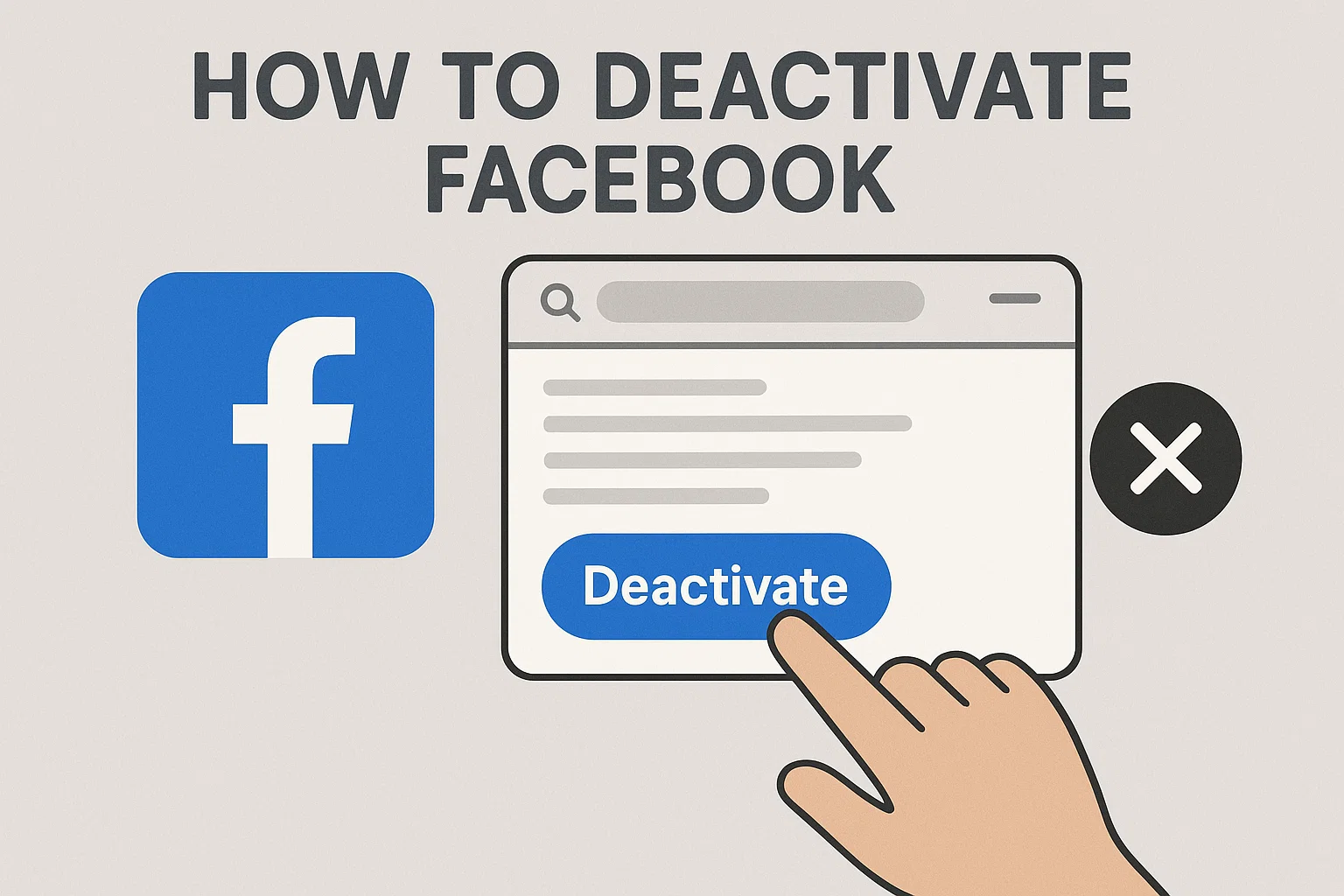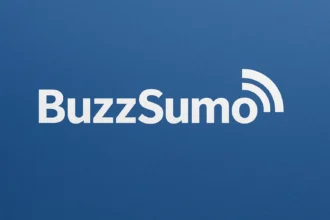introduction to How to Deactivate Facebook
In an age where digital interactions often overshadow physical ones, Facebook has long stood as the cornerstone of online social networking. With billions of users worldwide, it’s a platform that connects friends, families, colleagues, communities, and even strangers. But over time, many have begun to question the cost of such constant connectivity. Privacy concerns, mental fatigue, and the overwhelming nature of social media have prompted users to rethink their digital presence. If you’ve found yourself wondering whether you should step away from Facebook, deactivation might be the solution you’re seeking. How to Deactivate Facebook
Table of Contents
- Why People Deactivate Facebook
- Deactivation vs Deletion: Key Differences
- Things to Consider Before Deactivating
- How to Deactivate Facebook (Desktop & Mobile)
- How to Reactivate Your Facebook Account
- What Happens to Your Data After Deactivation?
- Deactivating Messenger Separately
- Deactivation for Business or Page Owners
- Facebook Alternatives
- Mental and Emotional Effects of Deactivation
- Final Thoughts
Deactivating your Facebook account is not the same as deleting it. While deletion is final and irreversible, deactivation gives you the freedom to step away temporarily, with the option to return when you’re ready. It’s a flexible choice, ideal for those who are unsure about leaving permanently or simply want a break to refocus their time and energy. How to Deactivate Facebook

Many people choose to deactivate their accounts for various reasons. Privacy remains one of the most compelling. With Facebook’s long history of data mishandling, including high-profile incidents like the Cambridge Analytica scandal, trust in the platform has waned. Even regular changes to privacy policies can feel invasive or confusing to the average user, leading many to seek more secure alternatives. How to Deactivate Facebook
Others step away from Facebook in pursuit of mental clarity. Numerous studies suggest that frequent social media use, especially on platforms like Facebook, can lead to increased anxiety, depression, and feelings of inadequacy. The constant stream of curated posts, arguments, and attention-seeking behavior can contribute to emotional fatigue. For those struggling with comparison, online drama, or digital burnout, deactivating Facebook becomes a form of self-care. How to Deactivate Facebook
Productivity is another strong motivator. The average user spends hours each day scrolling through their feed, often without intention. By deactivating Facebook, many reclaim that time for work, hobbies, exercise, and other offline pursuits that contribute more meaningfully to personal growth. How to Deactivate Facebook
Before deactivating, it’s important to understand what the process entails. Facebook allows users to either deactivate or delete their accounts, and knowing the difference is key. When you deactivate your account, your profile becomes invisible to others. No one can search for you, view your posts, or tag you in content. However, Facebook retains your data for future use in case you decide to return. Your friends won’t receive a notification that you’ve deactivated, though they may notice your absence in comments or group discussions. How to Deactivate Facebook
Deletion, on the other hand, is permanent. Once your account is deleted, all your posts, photos, messages, and other data are erased from Facebook’s servers. You can’t recover anything after deletion, and the process takes 30 days to complete. If you log in during that time, your deletion request is canceled.
If you’re leaning toward deactivation, take a few preparatory steps before proceeding. One useful action is downloading a copy of your data. Facebook provides tools that let you archive your posts, photos, videos, messages, and other interactions. This ensures you keep a record of your digital footprint in case you want to revisit it later. How to Deactivate Facebook
It’s also wise to inform close contacts about your plans to deactivate. While not mandatory, it helps avoid confusion and keeps communication open through other channels like email or text. Additionally, if you use Facebook to sign in to other apps or websites, make sure you switch to alternative login methods. Otherwise, you might find yourself locked out of services like Spotify, Pinterest, or news websites that use Facebook login.
For those who manage Facebook Pages or Groups, it’s essential to assign admin privileges to another user before deactivation. If you’re the sole admin and deactivate your account, your Page or Group may become inaccessible or unmanaged. This can disrupt communities, especially for businesses or public figures. How to Deactivate Facebook
Deactivating your Facebook account is straightforward and can be done from both desktop and mobile devices. On the desktop version, you’ll need to access your settings, locate the section titled “Your Facebook Information,” and select the option for “Deactivation and Deletion.” Choose “Deactivate Account” and follow the prompts. You’ll be asked to confirm your identity by entering your password and may be given options to pause notifications or explain why you’re leaving. How to Deactivate Facebook
On mobile, the process is nearly identical, though the interface is slightly more compact. Within the app, you’ll find settings under the menu icon, and from there you can access account controls to begin the deactivation process. You can choose whether your break is temporary or indefinite, and Facebook may offer suggestions or alternatives to encourage you to stay. You’re free to skip these and continue with deactivation.
One important detail to note is that Messenger remains active even after deactivating Facebook. This means friends can still send you messages, and you can continue chatting if you choose. If your goal is a complete disconnection, you’ll need to manually deactivate Messenger as well. This requires first deactivating your Facebook account, then opening the Messenger app, navigating to legal settings, and selecting the deactivation option from there. How to Deactivate Facebook
Reactivation is just as simple. If and when you decide to return, logging in with your previous email and password restores your account instantly. Your profile, posts, friends, and messages will all reappear as though you never left. This convenience is one of the main advantages of deactivation over deletion. How to Deactivate Facebook
After deactivating, your digital presence on Facebook becomes largely invisible. Your name and profile picture will disappear from most areas of the site. However, some traces remain. Messages you’ve sent to friends will still appear in their inboxes, and if you were tagged in a post, your name might still be visible. You will remain listed as a group admin unless you manually remove yourself or appoint someone else.
The platform retains your data while your account is deactivated. This includes your photos, comments, likes, and other personal details. Facebook stores this information securely so that you can restore your account easily. But if you’re uncomfortable with this, you might eventually consider permanent deletion instead. How to Deactivate Facebook
For business owners and content creators, managing Facebook pages requires extra consideration. Deactivating your account does not disable your page, but you won’t be able to make edits, post updates, or respond to messages. That’s why it’s essential to assign at least one other admin before stepping away. This ensures your brand or community remains active and supported during your absence.
Many users who deactivate Facebook explore alternative platforms to stay connected. Some turn to apps like Signal or Telegram for secure messaging. Others shift to platforms like Reddit for discussion-based interactions or LinkedIn for professional networking. Discord has also become a favorite for creating close-knit online communities without the noise of traditional social media. How to Deactivate Facebook
Of course, some find it refreshing to unplug entirely. They return to more personal methods of communication—phone calls, texts, in-person conversations—and focus on building offline relationships. This can lead to greater satisfaction, improved mental health, and a deeper connection to the present moment. How to Deactivate Facebook
The emotional effects of deactivating Facebook vary from person to person. Some feel instant relief, freed from the pressure of curating a digital persona or keeping up with the online lives of others. Without the constant exposure to news, political debates, and highlight reels of friends’ lives, many users report reduced anxiety and improved sleep. How to Deactivate Facebook
Others experience a period of adjustment. The fear of missing out (FOMO) can be strong at first, especially if your social circles rely heavily on Facebook for planning events or sharing updates. But over time, this feeling typically fades as you establish new routines and discover more fulfilling ways to connect and spend your time.
For those struggling with digital addiction or overstimulation, deactivation can serve as a powerful reset. It allows you to step back, reassess your relationship with technology, and regain control over how you allocate your attention. You may find yourself more productive, more present, and more creative without the constant noise of your feed.
If you decide that you’re ready to return, Facebook makes it easy. Simply log in, and everything is restored. But if you find peace and clarity in your absence, you might choose to extend your break—or leave the platform altogether. There’s no one-size-fits-all answer. What matters is that the decision feels right for you. How to Deactivate Facebook
In conclusion, deactivating your Facebook account is a valuable tool for anyone seeking space, clarity, or control in a digitally saturated world. It’s a reversible choice that allows you to step away without losing your history or connections. Whether your reasons are rooted in privacy, productivity, emotional well-being, or all of the above, taking a break from Facebook can be a powerful act of self-care. You can return anytime—or not. Either way, the choice is yours. How to Deactivate Facebook
[…] Also read: {How to Deactivate Facebook} […]





